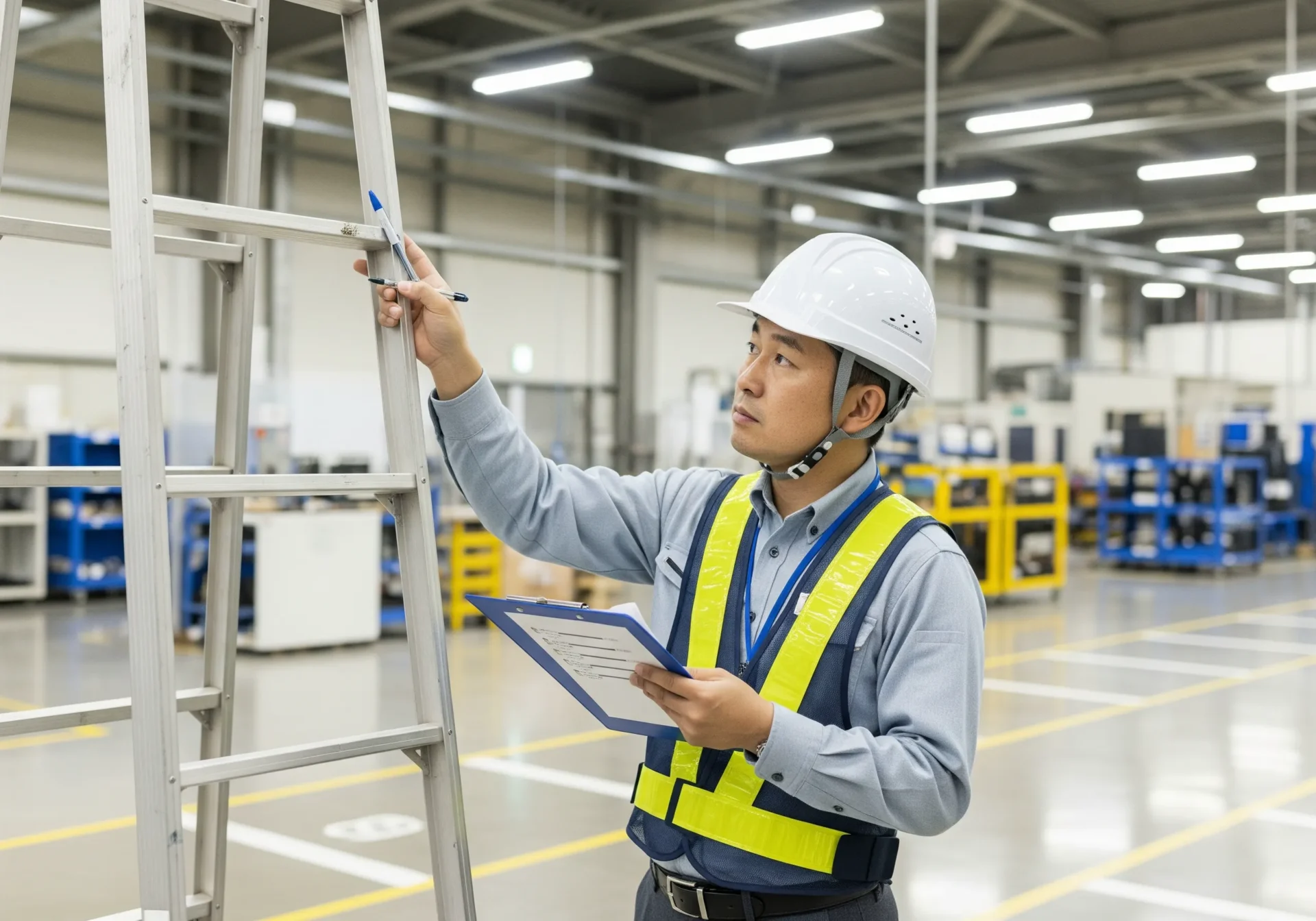Introduction
This article is intended for on-site supervisors and safety managers who regularly use ladders at manufacturing, construction, and logistics sites within Vietnam. Currently, at many work sites, inspection procedures that comply with international and domestic standards such as ISO, TCVN, and JIS, as well as occupational safety and health regulations, have not been sufficiently adopted, posing challenges for accident prevention and audit compliance. This article explains how to improve safety and manage records by creating a template for the entire process of “Daily Inspection → Periodic Inspection → Record.”
Challenges and Background
Market Data
According to statistics from the Ministry of Health, Labour and Welfare, approximately 30 people in Japan lose their lives each year in falls from ladders and similar equipment (Source: Ministry of Health, Labour and Welfare). Furthermore, about two-thirds of fall-related injuries are fractures, with more than half of the injuries affecting the lower and upper limbs (Source: National Institute of Occupational Safety and Health, Japan). Meanwhile, data from the Vietnam Occupational Safety and Health Administration indicates that ladders are the cause of about 20% of accidents related to working at heights.
Risk Presentation
Typical causes of accidents include displacement due to deterioration of non-slip grips, working on the top plate, improper posture, and ascending or descending while carrying loads. International standards recommend the combined use of pre-use inspections and periodic inspections to prevent such accidents.
Product and Service Introduction
Features
The “Daily Inspection Checklist” provided by Hasegawa covers eight items that should be checked before starting work on-site (such as securing, angle, condition of rungs, and non-slip shoe grips) to ensure safety before work begins (Source: Ministry of Health, Labour and Welfare). The “Periodic Inspection Checklist” allows for the early detection of defects by evaluating the deterioration of parts, metal fittings, and non-slip grips with a “Good,” “Fair,” or “Poor” rating (Source: Japan Light Metal Products Association). Furthermore, it adopts a recording format compliant with ISO 45001, facilitating submission during audits and safety management according to international standards.
Case Study (Before → Action → After)
Before: For manufacturing line maintenance, safety patrols were conducted only once a month, making it difficult to identify the cause of accidents when they occurred.
Action: All personnel conducted daily inspections before each task, and the maintenance staff recorded weekly periodic inspections.
After: A full year was achieved with no accidents, and document submission during audits became quick and smooth.
Hasegawa’s Reliability
Quality Control and Certifications
Hasegawa designs products that comply with TCVN and JIS standards, meeting strict criteria for durability and safety. The company has also obtained ISO 9001 (Quality) and ISO 45001 (Occupational Health and Safety) certifications, ensuring consistently high quality and safety from design to manufacturing and delivery (Source: ISO).
Custom Orders and Support System
We can accommodate custom orders for products such as FRP ladders and insulated step ladders. Additionally, we provide on-site safety education and training on how to use the inspection checklists, offering continuous support for safe operations even after delivery.
Conclusion
Ladder safety management can achieve both accident prevention and audit compliance by establishing a flow of “Daily Inspection → Periodic Inspection → Record.” The template introduced in this article conforms to international standards and is easy to implement. It is available for free distribution, so please contact us if you are considering improving your site or strengthening safety management.
Related Links:
Data Box
| Indicator | Value | Source |
| Annual number of fatalities due to ladders, etc. (Japan) | Approx. 30 people | Ministry of Health, Labour and Welfare |
| Percentage of fractures in fall accidents | Approx. 68.6% | National Institute of Occupational Safety and Health, Japan |
| Percentage of injuries to lower and upper limbs | Approx. 56% | National Institute of Occupational Safety and Health, Japan |
| Percentage of height-related work accidents in Vietnam caused by ladders | Approx. 20% | Vietnam Occupational Safety and Health Administration |
| Accident reduction rate for ISO 45001 certified companies | Up to 25% reduction | International Labour Organization (ILO) |

